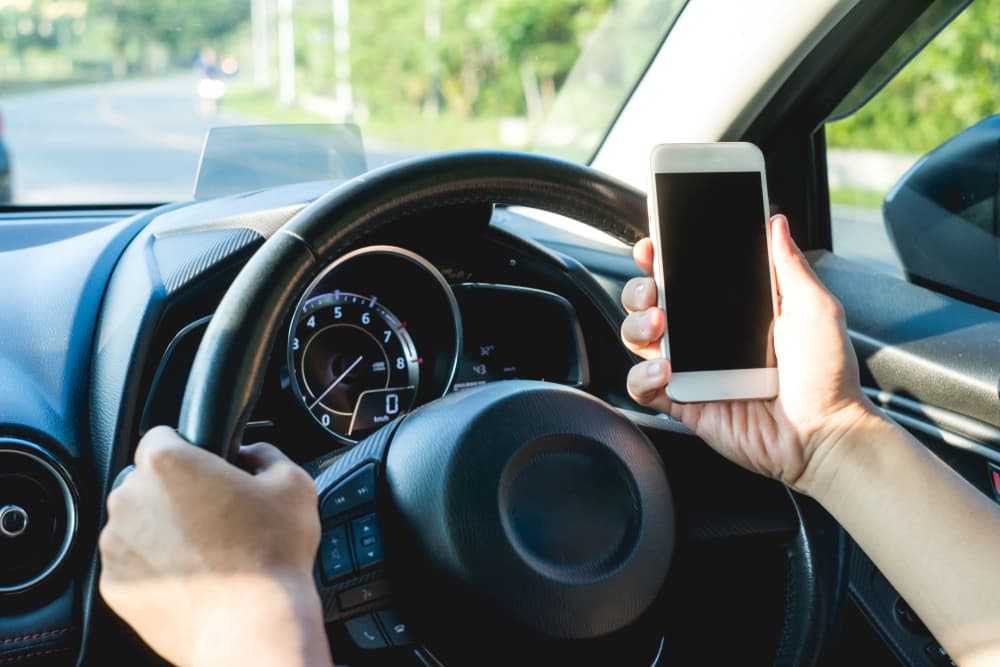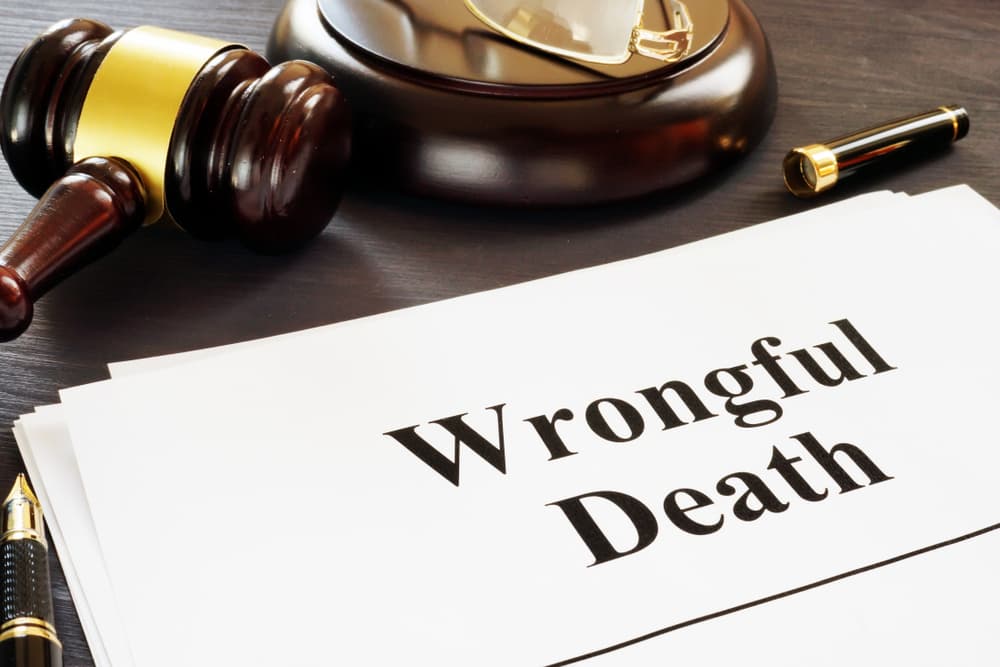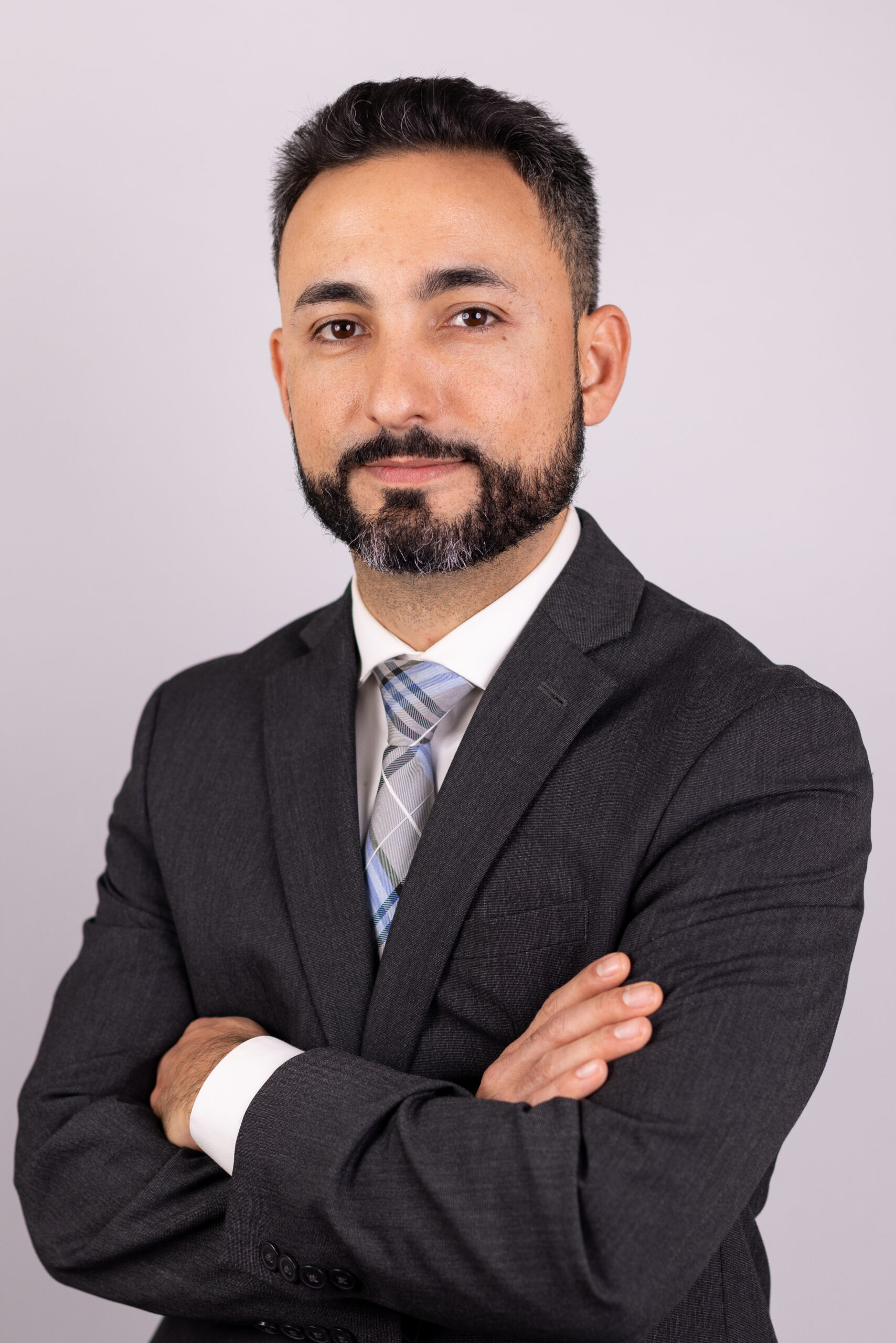Distracted driving is a pervasive problem on our roads, and its consequences can be devastating. When a fatal crash occurs due to distracted driving, determining who is to blame involves a complex analysis of the events leading up to the accident, the behavior of the involved parties, and applicable legal standards.
Losing a loved one is never easy, especially when their death is the result of a preventable accident. If you’ve lost a loved one in an auto collision caused by distracted driving, discuss your case with a skilled wrongful death attorney. A personal injury lawyer can investigate the crash to determine who is liable and pursue justice and compensation on your behalf.
What is Distracted Driving?

Distracted driving refers to any activity that diverts attention away from driving. It can include a driver taking their eyes off the road, hands off the steering wheel, or their mind away from the task at hand.
Distracted driving increases the risk of accidents and can lead to severe injuries and fatalities. In a recent year, over 3,000 lives were lost as a result of driving distractions.
Driving safely requires full attention, and drivers owe others on the road a duty to drive responsibly. Giving in to distractions while driving often has severe consequences.
Visual Distractions
A visual distraction takes a driver’s eyes off the road before them. Safe driving means paying full attention to the road and the vehicles around you.
Common examples of visual distractions include:
- Texting: Texting and driving is a significant problem, so much so that it is outlawed in many states. While sending a text “only” takes a driver’s eyes off the road for about five seconds at 55 MPH, that would equate to blindly driving the length of an entire football field.
- Adjusting controls: Looking away from the road to change the radio or climate control. While this is often necessary, it’s best to do it when the vehicle is stopped.
- Using GPS: Focusing on the GPS screen to input a destination or follow directions. It is especially problematic when drivers become lost.
Anything can happen on the road. When drivers take their eyes off the road, they may not have time to react to a situation until it’s too late.
Manual Distractions
Manual distractions take a driver’s hands off the steering wheel, whether one or both. These distractions can include:
- Eating or drinking: Handling food or beverages while driving. This is particularly common when drivers are running late or have short breaks for meals.
- Using a phone: Texting, emailing, and checking notifications are not only visual distractions but also manual ones. Holding a phone takes a hand off the wheel and eyes off the road.
- Grooming: Drivers often use their commuting time to groom themselves, including brushing their hair, doing their makeup, and shaving. This can create a hectic environment and require a driver’s hands and eyes.
There’s a reason new drivers are taught always to keep both hands on the steering wheel. Having both hands available is a big part of driving responsibly.
Cognitive Distractions
Cognitive distractions are those that take a driver’s mind away from driving. Common cognitive distractions include:
- Daydreaming: Being lost in thought or preoccupied with personal issues, reducing focus on the driving task.
- Talking to passengers: Engaging in intense conversation with passengers diverts mental focus from driving.
- Handling emotional stress: Being overwhelmed by stress or anxiety affects a driver’s concentration and decision-making while driving.
Driving can be monotonous for many drivers, causing them to become easily distracted. Cognitive distractions can be dangerous.
Establishing Liability for a Fatal Distracted Driving Collision
When a fatal accident occurs, it’s essential to pinpoint who is responsible. If the collision results from distracted driving, the driver is usually liable.
However, it’s not simply enough to claim a party is liable – you must prove it by establishing the appropriate legal concept of fault. In most cases, accidents caused by distracted driving are the product of negligent driving.
When a party is negligent, it means they failed to act in the same manner another similarly situated party would have acted. To establish a party’s negligence, the following elements must be satisfied:
- Duty of care: Drivers have a duty to drive safely and avoid distractions that can lead to accidents. You must show the driver owed the victim a duty of care at the time of the collision.
- Breach of duty: To prove negligence, it must be shown that the driver breached this duty by engaging in distracting behaviors. For instance, if a driver was texting and failed to notice a red light, that would constitute a breach.
- Causation: There must be a direct link between the driver’s distraction and the accident. It means proving that distraction was a significant factor in causing the collision.
- Damages: Finally, there must be evidence of harm resulting from the accident, such as a wrongful death, which can be quantified in terms of financial losses and emotional suffering.
In some cases, when the driver’s behavior is highly egregious, liability may be determined based on recklessness. Recklessness involves a higher degree of disregard for the safety of others. For example, repeatedly texting while driving despite knowing the risks can be considered reckless behavior.
While distracted driving does not reach the level of criminal behavior, distracted drivers who cause fatal accidents can face criminal charges. This is particularly the case if the driver was engaging in illegal activity while driving distractedly, for instance, if they were under the influence of alcohol or drugs. It’s worth noting that criminal liability is different from civil liability, and a responsible party can face both.
Establishing fault for a fatal distracted driving accident can be challenging and requires the assistance of a skilled personal injury attorney. A personal injury lawyer can thoroughly review the details of the collision to determine liability and hold the responsible party accountable for their wrongdoing.
Multi-Party Liability for Car Accident Fatalities
In some fatal car accident cases, more than one party may share liability. Possible scenarios involving multi-party liability include:
- Driver and employer: If the distracted driver was operating a company vehicle or was on duty at the time of the accident, the employer might also be held liable under the doctrine of vicarious liability.
- Vehicle manufacturer: If a defect in the vehicle contributed to the crash, the manufacturer can be held liable. For example, a malfunctioning vehicle entertainment system that caused the driver to become distracted might lead to claims against the manufacturer.
- Other road users: Other drivers or road users sometimes contribute to distracted driving accidents. For instance, if a driver was distracted by another driver acting recklessly, both parties might share responsibility.
Determining whether more than one party is liable for a fatal distracted driving accident requires an in-depth look at the collision. A lawyer can investigate to figure out whether multiple parties can be held responsible and work to prove their fault.
Determining Fault: The Role of Evidence
Establishing liability in a distracted driving case requires an investigation and gathering of evidence. Evidence can substantially aid in proving a party’s fault and pursuing the compensation you’re owed.
A fatal distracted driving accident case may involve several critical pieces of evidence, some of the most important including:
- Witness testimonies: Statements from witnesses who observed the driver’s behavior leading up to the crash can be crucial. Witnesses can provide firsthand accounts of the driver’s distraction and driving patterns.
- Phone records: In many cases, cell phone records can be used to determine whether a driver was texting or making calls at the time of the collision. It can be a strong indicator of distraction.
- Camera footage: Surveillance, traffic, or dashcam footage can provide visual evidence of the crash, including the driver’s actions leading up to the accident.
- Accident reconstruction: Experts in accident reconstruction can analyze the physical evidence from the scene, such as skid marks and vehicle damage, to determine how the accident occurred and whether distraction played a role.
Experienced personal injury attorneys can analyze the situation and determine the type of evidence that will most benefit and strengthen your case. They can obtain all available evidence and use it to establish fault and seek the financial recovery you’re owed from that liable party.
Taking Action Following a Fatal Car Crash
If you’ve lost a loved one in a fatal distracted driving accident, you’re likely feeling the financial burdens that come with an untimely loss. You may have options to pursue compensation to alleviate some of the stress.
Depending on the circumstances, you might pursue financial recovery through insurance. Alternatively, you can file a wrongful death lawsuit. A wrongful death attorney can assist with your claim and provide the guidance and direction you need.
Does Insurance Cover Fatalities?
Insurance often plays a significant role in addressing the financial consequences of distracted driving crashes. However, insurance settlements may not always fully cover the extent of damages, particularly in cases of severe injury or wrongful death.
When you file an insurance claim following a loved one’s fatal collision, you should be prepared to negotiate with the insurance company. Dealing and negotiating with insurance companies can be particularly difficult; having an attorney on your side can help ensure fair compensation. Legal counsel can assess the full scope of damages and handle the complexities of your insurance claim.
Pursuing a Wrongful Death Claim
If the insurance company is unwilling to settle your claim or the at-fault party is uninsured, you may have the opportunity to file a wrongful death lawsuit against the responsible party or their insurer.
Wrongful death claims are a type of personal injury claim. The difference is, since the victim is no longer around to pursue justice against their wrongdoer, their family and beneficiaries can do so instead. Filing a wrongful death lawsuit allows victims’ families to hold the responsible party accountable and get the compensation they need and deserve.
Wrongful death claims can be tricky, so having a seasoned personal injury lawyer handle your case is especially helpful. An attorney can handle all case-related tasks, from investigating the accident and proving fault to negotiating on your behalf and representing you in the courtroom. Hiring a wrongful death attorney lets you focus on yourself and your family during a trying time, knowing your case is in capable hands.
Compensation Available for Wrongful Death Cases

The primary goal of an insurance claim or wrongful death claim after a fatal car accident is to obtain just compensation. Various types of damages might be available, depending on the specific circumstances of the case and the jurisdiction. Damages can either be economic or non-economic.
Economic damages represent tangible losses, including:
- Funeral and burial expenses: Compensation for the deceased’s funeral, burial, and other related costs.
- Medical expenses: Reimbursement for any medical costs incurred before the victim’s death due to their collision.
- Lost income: Compensation for the deceased’s lost income or benefits they would have earned had they survived.
Conversely, non-economic damages represent intangible losses, such as:
- Pain and suffering: Compensation for the emotional pain and suffering experienced by the surviving family members due to the loss.
- Loss of consortium: Compensation for the loss of companionship, affection, and support that the surviving spouse or family members can no longer receive from the victim.
In some special cases, punitive damages may also be granted. Unlike compensatory damages, which aim to compensate for losses, punitive damages are to punish the defendant for their wrongdoing. These damages may be available in cases where a defendant’s actions were particularly egregious or reckless.
Money cannot bring a loved one back. However, it can help you carry some of the burdens and move on with your life without financial worries for the future.
An Experienced Lawyer Can Determine Liability After a Fatal Distracted Driving Accident
Fatal distracted driving crashes are tragic events with far-reaching consequences. Determining liability involves a detailed examination of the driver’s behavior, the circumstances of the accident, and relevant legal principles. It can be too much for a victim’s family to take on alone, which is why personal injury attorneys are available to assist.
After losing a loved one in a fatal distracted driving crash, do not wait to seek legal help. A personal injury lawyer can take on your case, establish fault, and represent your best interests as they pursue the most beneficial case result.

